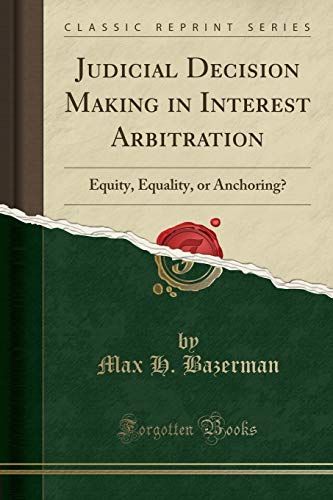
Judicial Decision Making in Interest Arbitration Equity, Equality, Or Anchoring? (Classic Reprint)
Excerpt from Judicial Decision Making in Interest Arbitration: Equity, Equality, or Anchoring? This study uses a simulation methodology to systematically analyze the explanatory power of three alternative distributive justice norms (equity, equality, and anchoring) in describing the judgments of arbitrators in conventional arbitration. Specifically, 69 experienced arbitrators determined a wage settlement for 25 simulated disputes. Each dispute was described by the same seven criteria, which provided data relevent to the three alternative norms of arbitration. The weightings of the criteria were determined for each arbitrator by regressing wage settlement on the seven criteria. In addition, clusters of arbitrators employing similar policies were Identified. Results indicated that arbitrators are very consistent in their judgments. However, they do not subjectively know the factors that affect their judgment. In addition, the results showed that the most common arbitration norm was anchoring; to maintain the status quo by simply adjusting the present wage by the average arbitrated increase in the industry. Equity (inflation rate, financial condition of the firm, average local wage) and equality (union and management final offers) factors were far less important in the judgment policies of arbitrators. In addition to investigating these issues, the discussion section critically examined the benefits and limitations of the developed simulation procedures for understanding and improving the arbitration process. About the Publisher Forgotten Books publishes hundreds of thousands of rare and classic books. Find more at www.forgottenbooks.com This book is a reproduction of an important historical work. Forgotten Books uses state-of-the-art technology to digitally reconstruct the work, preserving the original format whilst repairing imperfections present in the aged copy. In rare cases, an imperfection in the original, such as a blemish or missing page, may be replicated in our edition. We do, however, repair the vast majority of imperfections successfully; any imperfections that remain are intentionally left to preserve the state of such historical works.